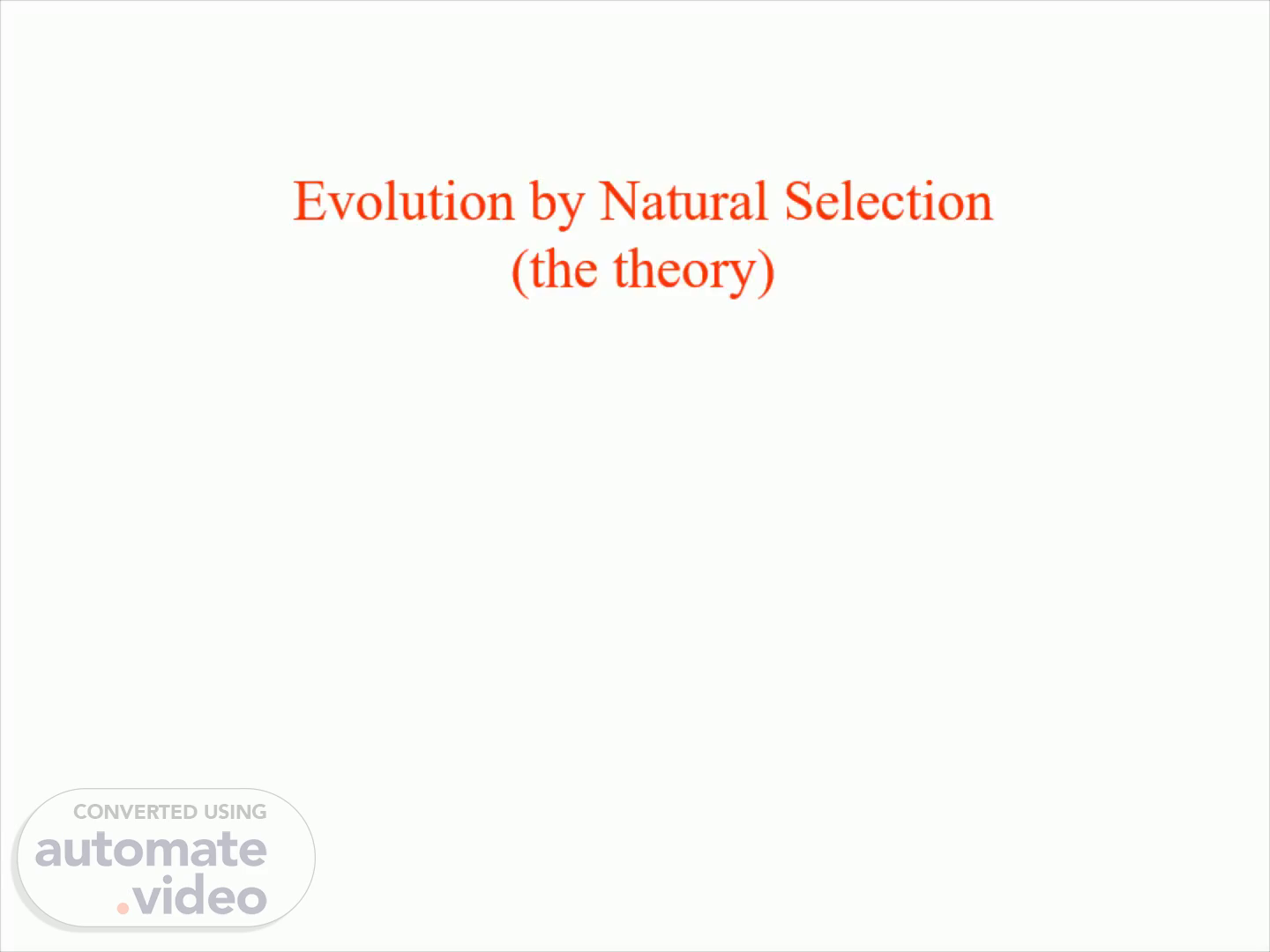
Evolution by Natural Selection (the theory)
Scene 1 (0s)
Evolution by Natural Selection (the theory).
Scene 2 (22s)
(1) Adaptation : Why do organisms resemble machines, or, why are organisms characterized by organized complexity and apparent purpose ? (2) Hierarchical taxonomy : Why can species be classified into larger (more inclusive) groups such that for any two groups, either they have no species in common (no overlap), or else one group is a subgroup of the other?.
Scene 3 (1m 51s)
Example of Adaptation : Bat echolocation. •Produces high-frequency sounds, uses echoes to get information about objects.
Scene 4 (5m 39s)
Mammals. Bats. Birds. Examples of Hierarchical Taxonomy : recognized in C. Linnaeus ’ pre-evolutionary classification of organisms (1700s).
Scene 5 (6m 36s)
This is the kind of pattern that isn’t found in classifications of organisms.
Scene 6 (7m 1s)
Gershwin’s Rhapsody in Blue. This is not a logically necessary attribute of classification systems: it’s peculiar to organisms.
Scene 7 (7m 43s)
Charles Darwin, and A.R. Wallace, developed the explanation for adaptation and hierarchical taxonomy in the mid-1800s.
Scene 8 (10m 52s)
Until the late 1700s, species were thought to be fixed, recently created manifestations of ideal essences This view was steadily undermined by discoveries of fossils of extinct organisms Definition 1 of evolution : “ descent with modification ” But how could this happen? What was the mechanism ?.
Scene 9 (13m 10s)
giraffe. Lamarck (1800): Individual striving and the inheritance of acquired characteristics – how the giraffe got its neck.
Scene 10 (15m 52s)
But most people at the time thought that organisms’ machine-like properties were a result of divine design.
Scene 11 (17m 23s)
T. Malthus “An Essay on the Principle of Population ” (1798-1826) Observation of variability in nature Artificial selection (plant and animal breeding).
Scene 12 (22m 23s)
• Darwin’s postulates : if the following conditions are met … •1. The ability of a population to expand is infinite, but the ability of the environment to support populations is always finite (“the struggle for existence ”)… •2. Organisms within populations vary, and this variation can affect the ability of organisms to survive and reproduce in the face of “hostile forces of nature” ( variation )… •3. Variation is transmitted from parents to offspring ( heritability )… •…then, change over time in the frequencies of variants in a population will occur •These three ingredients (Darwin’s postulates) are the necessary and sufficient conditions for the occurrence of natural selection (selection, for short), defined as nonrandom differential reproduction..
Scene 13 (26m 28s)
A definition of adaptation that includes the process by which adaptations emerge:.